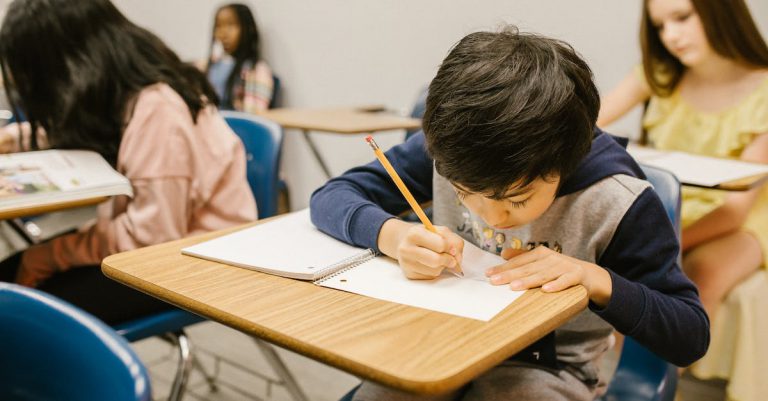Schools are critical institutions that play a significant role in shaping the future of our society. Unfortunately, schools can be vulnerable to fires, which can cause severe damage to the property and disrupt the education of students.
If you’re short on time, here’s a quick answer to your question: If a school burns down, it can have significant consequences for the students, teachers, and the wider community. The school may need to be rebuilt or relocated, and students may have to attend classes at temporary locations. The school’s academic programs may be disrupted, and it may take years to recover from the damage.
In this article, we’ll take a comprehensive look at what happens if a school burns down. We’ll discuss the immediate aftermath of a fire, the long-term consequences for the school and the community, and the steps that can be taken to recover from the damage.
Immediate Aftermath of the Fire
When a school burns down, the immediate aftermath can be chaotic and overwhelming. However, it is important to stay calm and follow certain procedures to ensure everyone’s safety and minimize the damage.
Evacuation and Safety Measures
The first priority when a fire breaks out in a school is to evacuate everyone from the building as quickly and safely as possible. All students, staff, and visitors should be accounted for and taken to a designated safe location outside of the school grounds.
It is also important to consider the safety of the firefighters and emergency responders who are working to put out the fire. They may need access to certain areas of the school or require specific safety equipment to do their job effectively.
Assessing the Damage
Once the fire is under control and everyone is safe, the next step is to assess the damage to the school. This may involve a structural engineer or other professionals who can determine the extent of the damage and identify any potential safety hazards.
The assessment should also include an inventory of any equipment, supplies, or materials that were lost or damaged in the fire. This information will be important for insurance and legal purposes.
Dealing with Insurance and Legal Issues
Dealing with insurance and legal issues can be a complex and time-consuming process, but it is essential to ensure that the school can recover from the fire and continue to provide education to its students.
It is important to contact the school’s insurance company as soon as possible to report the fire and begin the claims process. The insurance company will need detailed information about the damage and the school’s inventory of lost or damaged items.
Legal issues may also arise, particularly if the cause of the fire was due to negligence or faulty equipment. It is important to consult with a lawyer who has experience in school fire cases to ensure that the school’s rights are protected.
Remember, the aftermath of a school fire can be overwhelming, but by following proper procedures and seeking help from professionals, the school can recover and continue to provide education to its students.
Long-Term Consequences for the School and the Community
A school fire can have long-lasting effects on the educational institution, its students, teachers, and the wider community. In this section, we’ll take a closer look at some of the long-term consequences that can occur as a result of a school fire.
Disruption to Academic Programs
If a school burns down, the disruption to academic programs can be significant. Students may need to be relocated to other schools, which can cause added stress and anxiety. In addition, teachers may need to be reassigned to other schools, which can lead to a loss of continuity in the educational process. As a result, students may experience a decline in academic performance, and the school may struggle to maintain its reputation.
According to the National Fire Protection Association, there were an estimated 3,700 structure fires in educational properties in the United States in 2018, resulting in $53 million in property damage.
Relocation or Rebuilding of the School
After a school fire, the institution may need to be relocated or rebuilt. This can be a lengthy and expensive process that can take years to complete. In the meantime, students may need to attend classes in temporary facilities, which can further disrupt their education. If the school is rebuilt, it may need to be redesigned to meet modern safety standards, which can be costly and time-consuming.
According to the National Center for Education Statistics, the average cost of building a new public school was approximately $45 million in 2020.
Impact on Students, Teachers, and the Wider Community
A school fire can have a profound impact on students, teachers, and the wider community. Students may experience feelings of fear, anxiety, and uncertainty as a result of the fire, and may struggle to cope with the loss of their school and personal belongings. Teachers may also experience stress and anxiety, as they may need to find new employment or adjust to a new teaching environment. The wider community may also be affected, as a school fire can disrupt local businesses and lead to a decline in property values.
According to a study by the U.S. Fire Administration, fires in educational properties resulted in an average of 80 injuries and 3 deaths per year between 2014 and 2016.
Steps to Recover from the Damage
When a school burns down, the immediate priority is the safety of the students and staff. Once everyone is accounted for and safe, it’s time to think about how to recover from the damage. Here are some steps to take:
Developing a Recovery Plan
The first step in recovering from a school fire is to develop a comprehensive recovery plan. This should include a timeline for rebuilding or repairing the damaged facilities, as well as a plan for continuing education for the affected students. It’s important to involve all stakeholders in this process, including teachers, staff, students, and parents.
According to the National Fire Protection Association, schools should also establish a crisis management team to coordinate recovery efforts and communicate with all stakeholders. This team should include representatives from the school administration, local government, and emergency services.
Fundraising and Donations
Recovering from a school fire can be expensive, and schools may need to rely on fundraising and donations to cover the costs. Schools can start by reaching out to their local community and asking for donations of money, supplies, or labor. They can also set up online fundraising campaigns or partner with local businesses to raise funds.
It’s important to be transparent about how donations will be used and to thank donors for their contributions. Schools should also keep detailed records of all donations and expenses related to the recovery effort.
Collaborating with the Community
Recovering from a school fire is a community effort, and schools should work closely with their local community to ensure a successful recovery. Schools can partner with local businesses, non-profits, and government agencies to coordinate recovery efforts.
For example, schools can work with local businesses to provide materials or labor for the rebuilding process. They can also partner with non-profits to provide resources or counseling services for affected students and families. Additionally, schools can work with government agencies to secure funding or resources for the recovery effort.
Conclusion
Overall, a fire in a school can have devastating consequences for the students, teachers, and the wider community. However, with careful planning and collaboration, it’s possible for the school to recover from the damage and continue to provide education for the students. By taking the steps outlined in this article, schools can prepare for the worst and ensure that they’re ready to respond effectively to a fire or other emergency situations.






